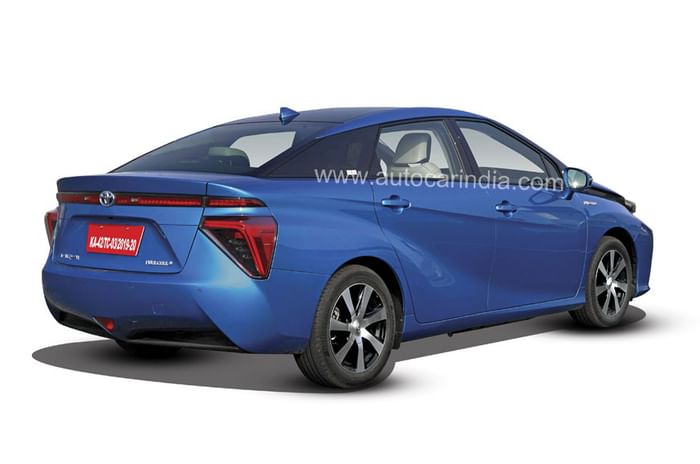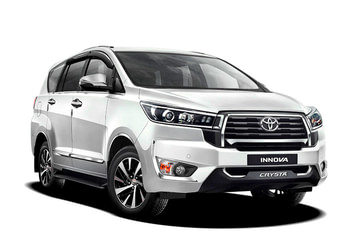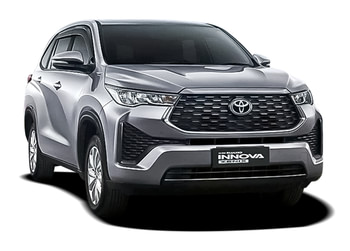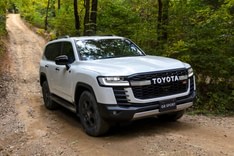Toyota Mirai review, test drive
Fuel cell electric vehicles have long been on the periphery of the electrification movement. We get a status check with the sci-fi Toyota Mirai.
Published on Feb 22, 2020 07:00:00 AM
53,655 Views
Follow us on
The Toyota Mirai you see here is arguably the most technologically advanced car in India at the moment. It’s a hydrogen fuel cell electric vehicle (FCEV) that’s in India as part of Toyota’s showcase of the possibilities of electrification. Fuel cell vehicles have been a work in-progress for long but Toyota – that’s been developing the technology since the early 1990s – has made some seriously large strides in this area. So while other carmaker’s experimental FCEVs never quite made the transition from motor-show floor to showroom floor, Toyota’s Mirai is one among a handful of fuel cell cars available for sale to the general car-buying public, if still only in select markets.
You can think of a fuel cell vehicle as a chemistry lab on wheels. In the most basic terms, a hydrogen fuel cell vehicle is an electric car, with power being generated by a series of chemical reactions between hydrogen and oxygen, rather than stored on board in a battery that is topped up via a plug. You could liken the fuel cell stack where the reactions take place to a small power generation station. The best bit? Water, said to be clean enough to drink, is the only by-product of the on-board power generation process. There are no CO2, no SO2 and no NOx emissions. In terms of rolling emissions, at least, the Mirai is as clean as they come.

Save for the 154hp electric motor from the Camry Hybrid under the bonnet, the other components of the Mirai’s system are hidden from view. The fuel cell stack, comprising 370 cells, sits tucked under the front seats while the pair of carbonfibre hydrogen gas tanks (one for storage and one for expansion) are positioned under the rear seat and in the boot. The tanks are rated for 700bar but Toyota says they can withstand twice that, giving a large safety margin. Hydrogen storage capacity is 5kg and it takes all of 3min for a tank-up. And here’s where it gets really interesting. The Mirai has a cruising range of 550km range in the European NEDC cycle. Even outside ideal test conditions, a theoretical range of over 450km with a 3min fill is possible. To put things in perspective, even the quickest-charging battery electric cars need a good 30min to get that sort of range. The powertrain also includes a nickel-metal hydride battery, much like what you’d find in traditional combustion engine-based Toyota hybrids. The job description is also the same. The battery stores energy recovered from deceleration and supplements the fuel cell (rather than an engine) under hard acceleration. Toyota classifies the Mirai as a hybrid – and now you know why. Anyway, that’s a lot of facts. What’s the Mirai like in practice?
The word that comes to mind is ‘normal’. It feels like any other battery electric vehicle. There are a few clicks from the fuel cell that break the calm on ‘ignition’ but really the ‘Ready’ symbol on the centrally-mounted screen is my only real indicator that it’s all systems go. The Mirai creeps forward in silence and, again, there’s nothing to suggest I’m sitting in anything out of the ordinary. Like any other electric car, the Mirai feels it’s peppiest at low speeds with the strong initial responses helping the Toyota post a respectable 9.9sec 0-100kph time. However, going full throttle has the motor whirr and whine, and by 120kph or so I can feel the power tail off. The 750m straights at ICAT Manesar’s test track aren’t long enough to verify the claimed 178kph top speed.

Slowing down is a non-event. Sure, the brakes aren’t the most feelsome at the top of pedal travel but that’s just something we’ve come to expect on cars with regenerative braking. ‘Br’, selectable by the flimsy gear lever, increases the level of regen braking and, in turn, helps the battery recuperate charge quicker. The readout that illustrates this energy recuperation and the source of motive power in real time makes for cool viewing. An unusual party trick is the option to discharge the freshly manufactured water from the underbody at the touch of an ‘H2O’ button. For lack of a better parallel, it’s the automotive equivalent of a car relieving itself!
For all its tech, the Mirai isn’t light at 1.8 tonnes. Still, from behind the wheel, it feels easygoing, and the ride is also pliant enough for what is a heavy sedan with a relatively basic torsion-beam setup at the rear.
This isn’t a full-blown review but I have to tell you, Toyota has done well with the materials inside the Mirai’s cabin. Front-seat comfort is also good but you have to live with some compromises at the back. The underfloor position of the fuel cell means you can’t tuck your feet under the front seats, while the concealed centre portion for the high-voltage wiring means there’s seating only for two. And with the secondary hydrogen tank occupying prime real estate aft the rear seats, you have to make do with a 361-litre boot. Also, I just can’t bring myself to like the Mirai’s rad design, though I do give it a second look when told the silhouette resembles the flowing shape of a droplet of water.

But let’s zoom out a bit and focus on the wider issue of FCEV potential. FCEVs like the Mirai have no harmful emissions, they can match the best of BEVs on range and don’t take much longer than a conventional petrol or diesel car to tank up. And let’s not forget a small detail – Hydrogen is the most abundant element in the universe! With so much going for them, FCEVs should be the technology in focus in a world marching towards electrification, right?
It’s not so straightforward. For one, fuel cells are expensive to manufacture due to the high cost of precious metal (usually platinum) components. Deriving hydrogen in a form that can be used in cars brings its own set of challenges. Extracting hydrogen from oil and natural gas produces greenhouse emissions that negate any future benefits, while producing hydrogen from water is energy-intensive and only ‘green’ if powered exclusively by renewable energy. Also, where’s the hydrogen filling infrastructure? India has one hydrogen filling station at Indian Oil Corporation’s R&D centre at Faridabad. The next-closest filling station is a good few thousand kilometres away.

The potential is there but fuel cell vehicles can only witness mass adoption when carmakers, energy suppliers and governments can address the aforementioned issues. ‘Mirai’ translates from Japanese to English as ‘the future’ and, as things stand, it’s a car that belongs there.
HOW FUEL CELL VEHICLES WORK
First used commercially by NASA in the 1960s for powering on-board electronics on spacecrafts, fuel cell technology has made its way to automotive applications in recent years. While an FCE V features a motor, battery pack and power control unit like other xEVs, hydrogen tanks and a fuel cell stack are unique to this kind of vehicle. The stack, which is a collection of fuel cells, generates electricity using hydrogen and oxygen, with the only by-product being water.

Breaking it down further, a fuel cell is a device consisting of a pair of electrodes – a negative anode and a positive cathode – coated with a platinum catalyst. An electrolyte like a polymer membrane completes the electrochemical cell. Hydrogen gas supplied from the tanks to the anode dissociates into protons and electrons due to the catalyst’s presence. While the electrons pass through an external circuit and generate current, protons pass through the electrolyte to the cathode, where they combine with oxygen from the air to form water. Electricity generated is supplied to the motor to propel the vehicle. The battery pack not only acts as storage for energy recuperation via regenerative braking, but also assists the motor during high-power scenarios like acceleration.
Also see:
Toyota Vellfire India launch on February 26
Tech Specs 
Copyright (c) Autocar India. All rights reserved.

















.jpg?w=234&h=156&q=90&c=1)
 Engine
Engine Transmission
Transmission
Comments
Member Login
Personal Details
No comments yet. Be the first to comment.